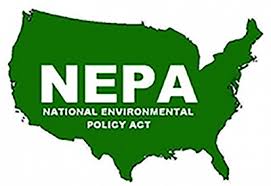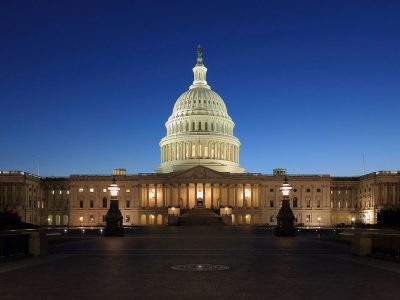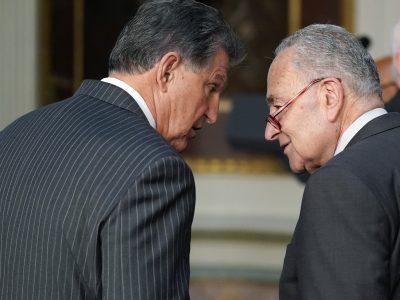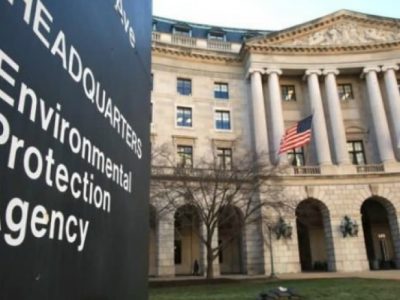NEPA
CEQ and Permitting Reform
The enactment of NEPA 2.0 presents a golden opportunity for the agency.
In the recent debt ceiling law, Congress extensively revamped NEPA, the law governing environmental impact statements. An obscure White House agency, the Council on Environmental Quality (CEQ), will have the first opportunity to shape the interpretation of the new language. Much of the language in the new law is poorly drafted or vague, making CEQ’s …
Continue reading “CEQ and Permitting Reform”
CONTINUE READINGThe Drafting Puzzles of NEPA 2.0
In an effort to streamline NEPA, Congress may only have made parts of it incomprehensible.
Shortly after Biden signed the new NEPA rewrite as part of the debt ceiling law, I wrote a blog post about a major drafting glitch at the heart of the new provisions. Today, I’d like to follow up with more examples. This poor drafting could really hobble implementation of the new provisions. We live in …
Continue reading “The Drafting Puzzles of NEPA 2.0”
CONTINUE READINGThe Forthcoming Interpretation Wars
The new NEPA amendments weren’t intended to speed up the process. But they’ll also spark new litigation.
The Interior Department has a rule that environmental review isn’t required for a prescribed fire of 4,500 acres, subject to restrictions that aren’t relevant here. Prior law authorized this kind of regulation but also required the agency to consider whether a particular fire involved exceptional circumstances, such as being next to a wilderness area. After …
Continue reading “The Forthcoming Interpretation Wars”
CONTINUE READINGThe New NEPA: A User’s Guide
The Debt Ceiling Law Rewrote NEPA. Here’s a map to the new statute.
The National Environmental Policy Act (NEPA) was passed over fifty years. It created a new tool for environmental protection, the environmental impact statements, It also created the White House Council on Environmental Quality (CEQ), which issued guidelines of implementing NEPA in 1978. Lawyers will need to retool quickly because of recent changes. Here’s a roadmap …
Continue reading “The New NEPA: A User’s Guide”
CONTINUE READINGOn the Perils of Hasty Drafting
The Debt Ceiling Bill was written under intense time pressure. It shows!
Someone asked me how the new bill defines what kinds of projects have enough federal involvement to require an environmental assessment. I thought I knew the answer. But when I looked carefully at the bill’s language, I realized that it actually can’t mean what I thought it did. In fact, it’s so badly written that …
Continue reading “On the Perils of Hasty Drafting”
CONTINUE READINGNEPA and the Debt Deal
Will the permitting sections of the debt ceiling bill undermine environmental reviews?
Prior to the release of the text of the debt ceiling bill Sunday night, press reports had mentioned only a couple of provisions relating to environmental impact statements. It turns out there’s a lot more. The bill would make numerous changes in the statute governing impact statements, the National Environmental Policy Act of 1969 (NEPA). …
Continue reading “NEPA and the Debt Deal”
CONTINUE READINGA Taste of Things to Come
Welcome to 2023. It’s going to be a wild ride.
In the past week, we’ve gotten a glimpse of what the next two years will look like. On the one hand, chaos in Congress. On the other hand, quiet progress toward environmental goals by the Biden Administration. Both trends are likely to continue throughout this Congress and the second half of the presidential term. The …
Continue reading “A Taste of Things to Come”
CONTINUE READINGNational Parks, Climate Change, and Active Management
When should park managers response to fire risk and climate change through active management?
This summer, the Earth Island Institute filed a lawsuit challenging active management projects in Yosemite National Park – those projects involve the cutting of trees to reduce the risk of fire (or that is the explanation of the National Park Service for the projects). The tree cutting was begun this past year, and the National …
Continue reading “National Parks, Climate Change, and Active Management”
CONTINUE READINGThe Side Deal
How would the Manchin-Schumer deal on permitting impact the environment?
To get Manchin’s vote for the $379 billion in environmental spending in the IRA bill, Schumer and other congressional leaders had to agree to support Manchin’s efforts to speed up the permit system. At this point, all we have is a one-page list of permitting changes that would form the basis of a new bill. …
Continue reading “The Side Deal”
CONTINUE READINGWhat the Supreme Court Left Standing
No, the Court didn’t eliminate EPA’s ability to fight climate change.
The Supreme Court’s ruling in the West Virginia case left many people with the impression that it eliminated the government’s power to regulate carbon emissions. There are quite a number of areas of climate law that the Supreme Court has left untouched. Here’s the EPA authority the Court hasn’t touched: EPA’s jurisdiction over greenhouse gases. …
Continue reading “What the Supreme Court Left Standing”
CONTINUE READING









